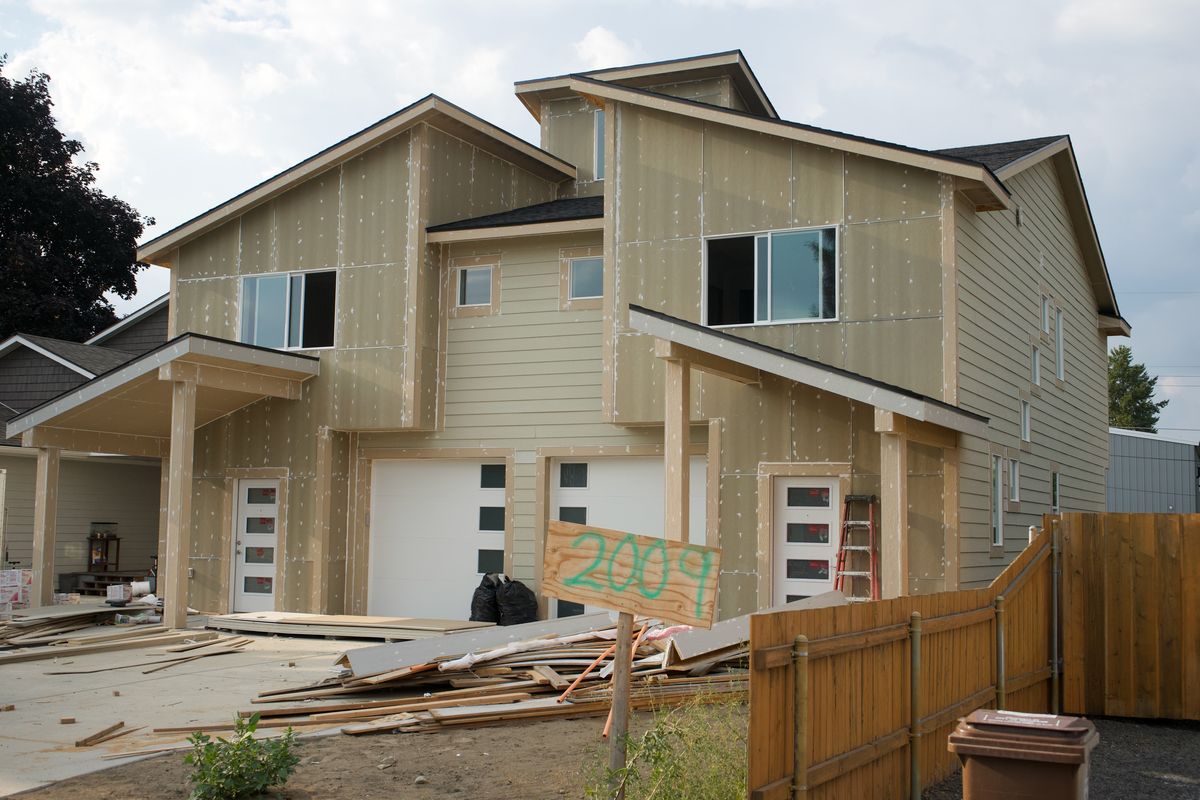Spokane permanently relaxes regulations allowing more multiplexes and development flexibility

Denser housing is now permanently legal in Spokane, allowing developers and property owners to subdivide smaller lots and build residences with up to six units in any residential area, paving the way for more mixed-use retail and other facilities in neighborhoods.
The changes will go into effect at the start of next year.
On Monday, the Spokane City Council finalized a 16-month effort to relax local land-use restrictions, allowing more multiplexes and townhomes across the city in what developers and housing advocates have called a major step forward for affordability and addressing the city’s insufficient housing inventory.
“It’s been kind of a revelation,” said Matt Hutchins, an architect who sits on the Seattle Planning Commission and is working to develop a six-plex on Grand Boulevard that would have been illegal to build two years ago.
“What’s happening from a zoning perspective is something that is honestly not happening anywhere else in Washington, and maybe not even in the United States,” Hutchins added. “It’s really exceptional.”
In 2021, Mayor Nadine Woodward declared Spokane was in a housing emergency. By July 2022, with Woodward’s support, the City Council unanimously approved the Building Opportunities and Choices for All initiative, an interim zoning change allowing duplexes, triplexes, quadplexes and townhomes to be built in all residential zones citywide for one year.
The move was hailed across the state as a significant attempt to cut through the regulations that have potentially slowed new residential development and helped drive up housing costs. Earlier this year, the state Legislature overwhelmingly approved a bill that requires cities of a certain size, such as Yakima, Seattle, Renton and Spokane, to relax their density restrictions.
The state law, some of which won’t take effect in Spokane until 2026, went further than Spokane’s pilot program, allowing up to six-plexes to be built in any residential area near rapid transit bus stops like the new City Line, or if two of the six units are affordable housing.
Changes to the city’s comprehensive plan approved in August and to city code approved Monday, building off the interim ordinance but now dubbed Building Opportunities for Housing, go even further still, allowing up to six units per lot in residential areas.
The changes to the city’s land-use regulations also emphasize that some nonresidential businesses or facilities, such as schools, churches, grocery stores and small retail businesses, will be allowed in all residential areas, though only if they “integrate into the nature and context of the neighborhood.”
Spokane is in a position to take advantage of the newly allowed development in a way that some other cities in the state, such as Seattle, may not be, Hutchins noted.
“Even though (Seattle’s) rents are high, it’s often not enough to make a project pencil,” he said. “What we found in Spokane is that construction costs are lower, land costs are quite a bit lower and the regulatory burden is also lower.”
Monday’s ordinance is just one part of a broad attempt to address the problem of housing affordability in Spokane. The City Council last year expanded a tax exemption for multifamily housing developments and loosened rules for accessory dwelling units, often called in-law units.
This summer, parking minimums were eliminated for new apartments and homes built near city bus routes, a major cost for some development.
That waiver of parking minimums was baked into the code changes approved Monday, though city Principal Planner Tim Thompson noted in an October presentation that most projects still will be built with parking, as it is difficult to get a loan without parking included.
More work is needed to fully address the housing shortage, said Darin Watkins, director of government affairs for the Spokane Association of Realtors, shortly before Monday’s vote.
“Let’s remind ourselves that as of the last census we were 25,000 housing units short in the city of Spokane, and since that time we’ve added 11,000 people to our rolls,” Watkins said. “We have a lot of work to do.”
This is not the first time that Spokane has turned to “middle housing” in response to a population boom. When the city’s population tripled between 1900 and 1910, duplexes, townhomes and similar housing types were essential to ease the resulting housing crisis, city planner KayCee Downey said during an October presentation on the code changes approved Monday. But in the coming decades, restrictive zoning ordinances were “weaponized” to intentionally make certain neighborhoods unaffordable for lower-income families, often in order to circumvent bans on racial segregation, Downey added.
“With the Supreme Court ruling that race cannot be a determining factor when selling a home, a number of jurisdictions throughout the country began using zoning regulations that increased block sizes, increased setbacks and limited housing types specifically to raise the cost of housing in certain neighborhoods, effectively creating economic segregation,” Downey said.
Councilman Michael Cathcart said shortly before Monday’s vote that he’s hopeful relaxing those zoning regulations will right those historic inequities.
“This does start helping us to kind of rewind some of the redlining that occurred over history that has created a lot of things that we can probably never truly fix,” Cathcart said. “But we can do our best to roll back that clock and create some flexibility there.”